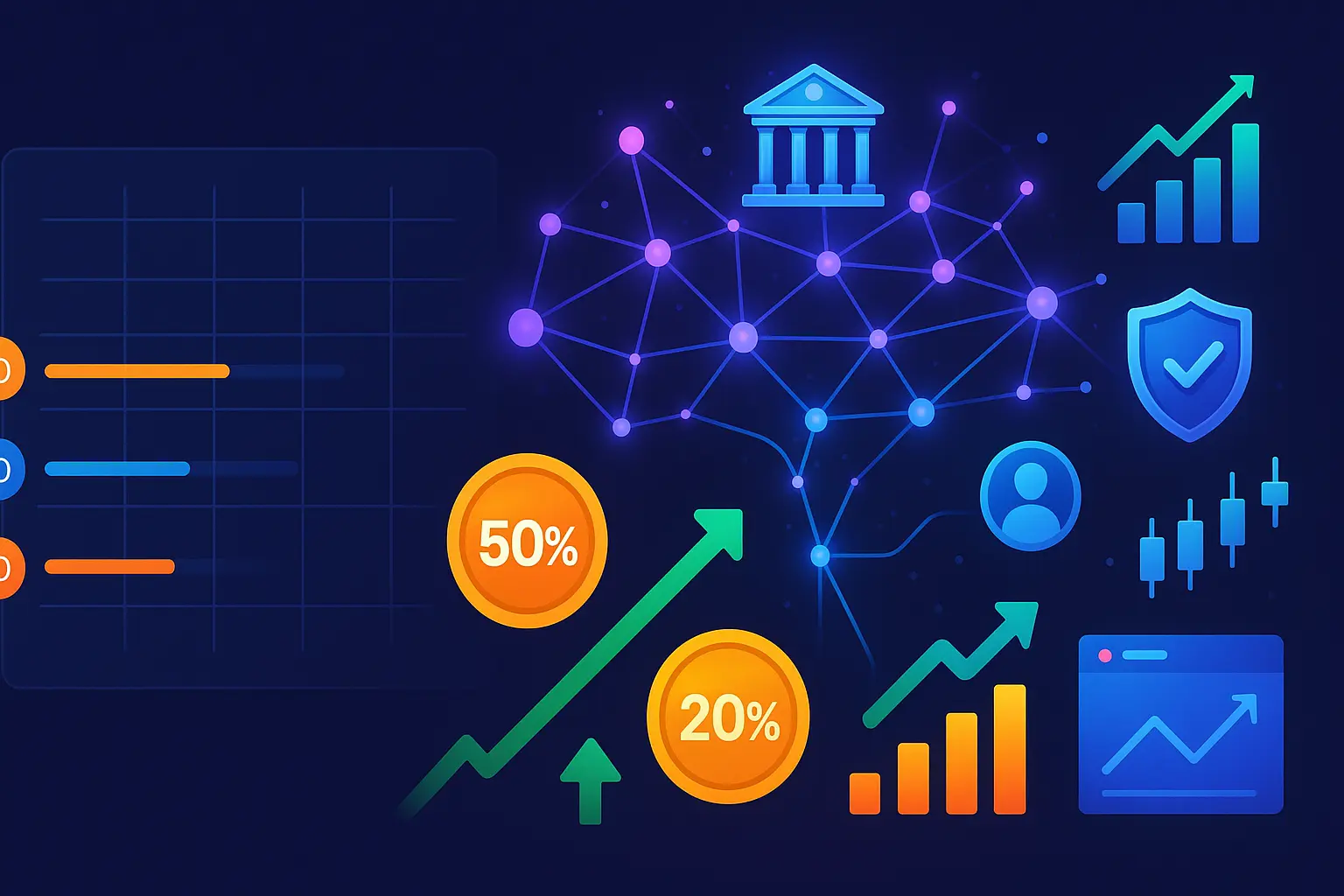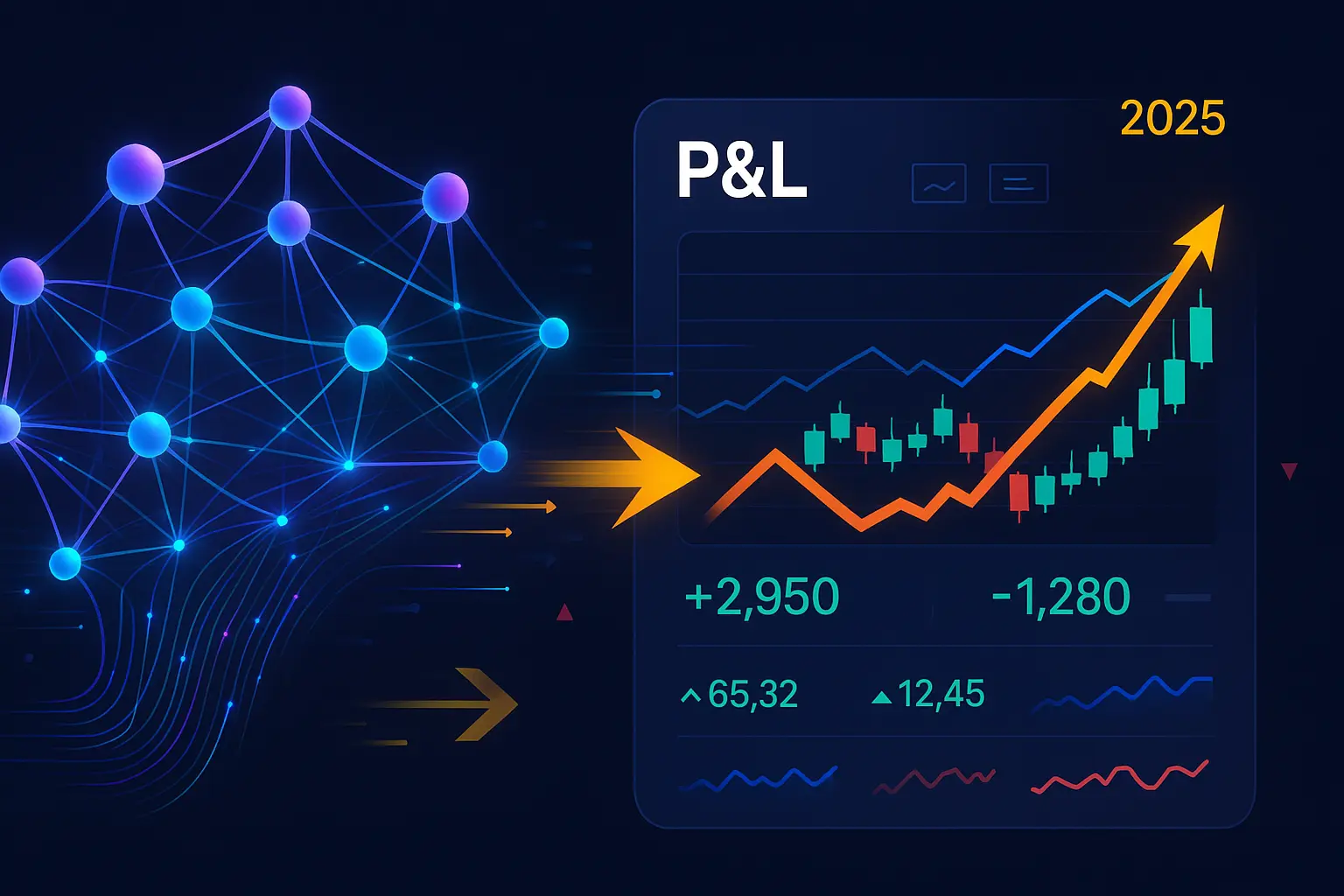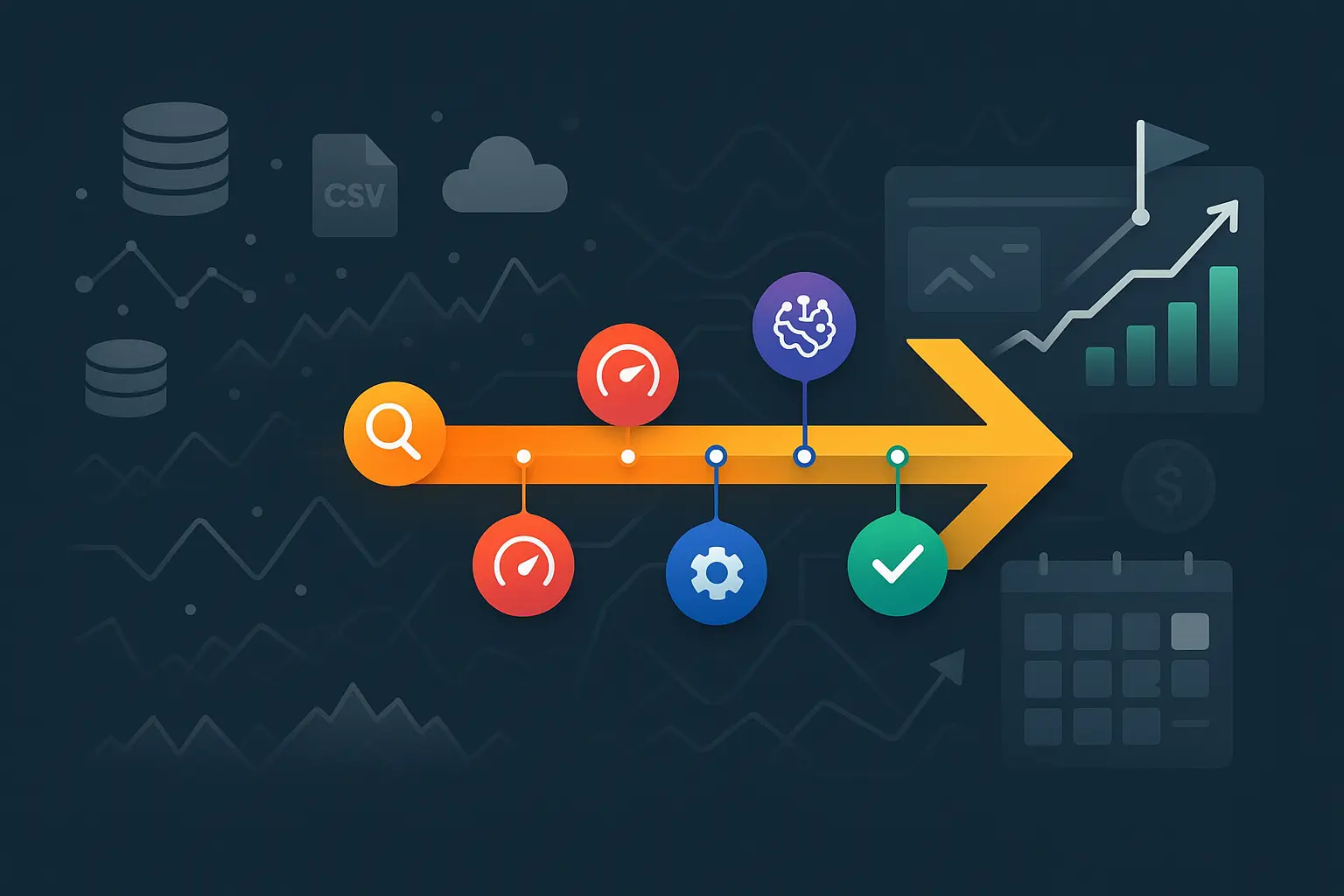Machine learning is no longer an experimental line item on a roadmap — in financial services it’s becoming a must-have tool for protecting margins, keeping pace with market volatility, and meeting a rising compliance burden. Firms that treat ML as a risk or a future opportunity are already losing ground to peers who use it to automate routine work, free up advisors, and make faster, data-backed decisions.
This guide focuses on practical, ROI-backed ways to apply machine learning and a realistic 90-day plan to move one use case from pilot to production. We’ll skip the hype and stick to outcomes you can measure: reduced costs, faster cycle times, more advisor capacity, better client engagement, and concrete scorecards you can use to prove value to risk and exec teams.
Below are the kinds of high-impact wins we’ll cover — real-world examples, not theoretical projects:
- Advisor co-pilot (investment services): material operational savings with roughly a ~50% reduction in cost per account and 10–15 hours back to each advisor per week.
- AI financial coach (client-facing): measurable lifts in engagement (around +35%) and much shorter support queues (≈40% lower wait times).
- Personalized managed portfolios: scalable rebalancing and reporting to defend advisory fees and retain AUM.
- Underwriting virtual assistant (insurance): review cycles cut by over 50% and revenue uplift from new models (~15%).
- Claims processing assistant: 40–50% shorter cycle times and substantial reductions in fraudulent payouts (30–50%).
- Regulatory and compliance tracking: automation that accelerates updates (15–30x faster) and slashes filing workload by half or more.
None of this happens without guardrails. We’ll also walk through the governance, security, and explainability practices that let you deploy ML in ways auditors and legal teams accept — and that protect client data and your IP.
Finally, the article lays out a tight, practical 90-day roadmap: pick one clear cost or revenue lever, build the smallest model that could work, run human-in-the-loop testing, then deploy with MLOps and train frontline teams. If you’re juggling buy vs. build vs. partner decisions, you’ll get a simple matrix to pick the fastest route to ROI and a set of scorecards to prove the business case.
Ready to see how one focused ML project can move the needle in 90 days? Read on — we’ll start with how to choose the right first use case and how to get legal and risk to say “yes.”
Why machine learning is now non-optional in financial services
Fee compression and the shift to passive funds are squeezing margins
Competition and product commoditization have driven fees down across many parts of financial services. As pricing becomes a primary battleground, firms that rely on manual processes and legacy workflows find their margins eroding. Machine learning changes that dynamic by automating routine work, improving operational efficiency, and enabling scalable personalization. From automated portfolio rebalancing and dynamic pricing to intelligent client segmentation and outreach, ML reduces unit costs while preserving—or even enhancing—service quality. In short, it converts fixed-cost processes into scalable, data-driven capabilities that defend margin and allow firms to compete on service differentiation rather than on price alone.
Volatility and valuation concerns demand faster, data-driven decisions
Market volatility and rapid shifts in asset valuations compress the window for profitable decisions. Traditional reporting and quarterly review cycles are too slow to react to intraday or regime changes. Machine learning enables continuous signal extraction from heterogeneous data (market prices, alternative data, news flows, portfolio exposures) and supports faster, more accurate risk and return estimates. That speed matters for everything from trade execution and hedging to client-facing advice: models surface near-term risks, prioritize actions, and free human experts to focus on the decisions that require judgement rather than on collecting and cleansing data.
Compliance load and talent gaps make automation a necessity
Regulatory complexity and the growing volume of required documentation place a heavy, ongoing burden on compliance, legal, and operations teams. At the same time many institutions face talent shortages and rising costs for specialized staff. Machine learning tackles both problems by automating document review, extracting structured data from unstructured filings, flagging exceptions for human review, and continuously monitoring rules and filings. The result is faster, more consistent compliance work with smaller teams—reducing operational risk while freeing scarce experts for higher-value tasks.
Taken together, these three pressures create a business imperative: ML is not just a “nice to have” efficiency project but a strategic capability that protects margin, accelerates decision-making, and preserves regulatory resilience. That business imperative makes it critical to prioritize ML initiatives that deliver measurable impact—starting with the highest-ROI use cases and clear operational metrics to prove value.
High-ROI machine learning use cases that move P&L
Advisor co-pilot (investment services): ~50% lower cost per account; 10–15 hours/week back to advisors
“Advisor co-pilot outcomes observed: ~50% reduction in cost per account, 10–15 hours saved per advisor per week, and a 90% boost in information-processing efficiency — driving material operational savings and advisor capacity.” Investment Services Industry Challenges & AI-Powered Solutions — D-LAB research
What this looks like in practice: an ML-powered assistant that drafts client briefings, summarizes research, surfaces personalized action items, and automates routine reporting. The result is lower servicing cost per account, more advisor capacity for revenue-generating conversations, and faster onboarding. Key KPIs to track: cost per account, advisor time saved, conversion rate on advisor-led outreach, and client satisfaction.
AI financial coach (clients): +35% engagement; −40% call wait times
Client-facing ML agents deliver personalized nudges, scenario simulations, and proactive guidance through chat or app. These systems increase engagement and reduce dependence on contact centers by resolving common queries and guiding customers to self-service solutions. Measure impact via active user rate, time-to-resolution, call volume reduction, and revenue influenced through improved product uptake.
Personalized managed portfolios: scalable rebalancing, reporting, and outreach to defend fees
Machine learning enables portfolio personalization at scale — dynamic rebalancing, tax-aware harvesting, and tailored reporting — while keeping operational headcount flat. This both defends fee-based revenue and improves retention by delivering differentiated outcomes. Trackable metrics include advisor-to-AUM ratio, rebalancing frequency and accuracy, client churn, and fee retention over time.
Underwriting virtual assistant (insurance): 50%+ faster reviews; ~15% revenue lift from new models
In underwriting, ML assistants accelerate risk assessment by extracting structured insights from documents, suggesting pricing bands, and surfacing edge-case risks for human review. That lets underwriters process more submissions and prototype new product structures faster. Use throughput, time-per-decision, hit rate on suggested pricing, and incremental revenue from new product adoption to quantify ROI.
Claims processing assistant: −40–50% cycle time; −30–50% fraudulent payouts
Automated claims triage and decisioning platforms use ML to classify severity, estimate damages, and flag suspicious patterns. They cut cycle times, improve customer experience, and reduce losses from fraud. Core KPIs: average cycle time, percent of claims auto-closed, fraud detection rate, and customer satisfaction on claims handling.
Regulation and compliance tracking: 15–30x faster updates; −50–70% filing workload
Regulatory assistants monitor rule changes, extract obligations from text, and surface required actions to compliance teams — turning a manual, high-risk process into a repeatable workflow. This reduces manual filing work and speeds response to new obligations. Measure policy-change lead time, reduction in manual hours on filings, and error rates in submissions.
Across all these use cases the common theme is measurable P&L impact: reduce unit cost, unlock capacity, raise revenue-per-employee, and tighten loss controls. The next step for any of these initiatives is to move from isolated pilots to repeatable, auditable deployments — which means building the right controls, security, and explainability around the models before broad rollout.
Build with guardrails: governance, security, and explainability that pass audits
Model risk management: reason codes, challenger models, backtesting, and drift monitoring
Design model governance as a lifecycle: require documented business intent and success metrics at model intake, use challenger models to validate production decisions, and enforce regular backtesting against held-out windows. Every decision must surface a human-readable reason code so operators and auditors can trace why the model acted. Implement continuous drift monitoring for features and labels, with automated alerts and a defined remediation playbook (rollback, retrain, or human override) so production risk is contained.
Protecting IP and client data: start with ISO 27002, SOC 2, and NIST 2.0 controls
“Average cost of a data breach in 2023 was $4.24M, and Europe’s GDPR fines can reach up to 4% of annual revenue — underscoring why ISO 27002, SOC 2 and NIST frameworks are critical to protecting IP and client data.” Deal Preparation Technologies to Enhance Valuation of New Portfolio Companies — D-LAB research
Translate those frameworks into concrete controls for ML: encryption at rest and in transit for datasets and weights, strict identity and access management for experiments and model stores, separation of PII from feature stores, and repeatable incident response procedures that include model rollback. Make secure development and vendor assessments mandatory for any third-party models or data sources.
Data governance and lineage: approvals, PII minimization, and audit trails by default
Ship data lineage and cataloging as core infrastructure: every feature, dataset and transformation must record provenance, owner, and approval state. Enforce PII minimization by default (masked or tokenized fields, role-based access) and require automated checks before a dataset is used for training. Build immutable audit logs that capture data versions, model versions, inference requests, and human interventions so compliance teams can answer “who, what, when, and why” for any model outcome.
Fairness and consumer outcomes: bias testing and continuous monitoring
Operationalize fairness by defining outcome-based acceptance criteria tied to business risk (e.g., disparate impact thresholds, error-rate parity where appropriate). Implement pre-deployment bias scans, counterfactual checks, and synthetic testing for edge cases; then monitor post-deployment consumer outcomes and complaint signals to detect drift in fairness or performance. Pair automated alerts with a human-led review committee that can authorize adjustments, guardrails, or model retirement.
Practical next steps are straightforward: codify these controls into model cards and runbooks, instrument telemetry so audits are evidence-based rather than manual, and assign clear RACI ownership for each control. With these guardrails in place, teams can scale safe deployments rapidly and focus on demonstrating measurable business impact in short, auditable cycles — the logical lead-in to a tight operational playbook for moving pilots into production.
Thank you for reading Diligize’s blog!
Are you looking for strategic advise?
Subscribe to our newsletter!
From pilot to production in 90 days
Days 0–30: pick one cost or revenue lever; baseline; legal and risk sign-off
Start by selecting a single, high-impact lever (e.g., reduce cost per account, shorten claims cycle, increase advisor capacity). Define 2–4 primary KPIs and capture a clean baseline so success is measurable. Assemble a small cross-functional team: a product owner, data engineer, ML engineer, compliance lead, and a frontline SME. Secure early legal and risk sign-off on data use, scope, and customer-facing behavior to avoid rework later. Deliverables by day 30: problem statement, baseline dashboard, data access checklist, and formal sign-off from risk and legal.
Days 31–60: build the smallest model that could work; human-in-the-loop in UAT
Focus on an MVP that demonstrates the business case with minimal complexity. Use the most reliable features first, instrument feature engineering for reproducibility, and prioritize interpretability over marginal gains in accuracy. Run the model in a controlled UAT with human-in-the-loop workflows so subject matter experts validate outputs and correct edge cases. Track model-level and process-level KPIs (precision/recall where relevant, time saved, error reductions) and iterate quickly on failure modes. Deliverables by day 60: validated MVP, UAT feedback log, retraining checklist, and a pre-production runbook.
Days 61–90: deploy with MLOps (CI/CD, feature store, monitoring) and train frontline teams
Move from UAT to production by implementing repeatable deployment pipelines: versioned models, CI/CD for code and data, a feature store, and automated monitoring for performance and drift. Integrate alerting and rollback procedures so operations can act fast on anomalies. Pair technical rollout with operational readiness: playbooks for users, short training sessions for frontline staff, and an internal SLA for incident response. Deliverables by day 90: production pipeline, monitoring dashboards, runbooks, trained users, and a controlled 1–3 week ramp plan.
Buy, build, or partner: decision matrix for speed, control, and cost
Match vendor decisions to your objective and timeline. Buy (third-party) when speed to value is critical and the use case is non-core; build when IP, tight integrations, or competitive differentiation require control; partner (managed service) when you need a middle ground—faster than build, more adaptable than off-the-shelf. Use a simple matrix: time-to-value vs. long-term total cost of ownership vs. integration complexity, and score each option against your priorities.
Scorecards to prove ROI: investment services (AUM/advisor, cost per account, NRR) and insurance (cycle time, loss ratio, FNOL to payout)
Design scorecards that map the model’s outputs to commercial metrics. For investment services, tie results to metrics such as AUM per advisor, cost per account, client engagement, and net revenue retention. For insurance, measure cycle time reductions, changes in loss ratio, FNOL-to-payout speed, and fraud-related spend. Include leading indicators (model accuracy, auto-decision rate, time saved) and lagging business outcomes so stakeholders can see both short-term performance and long-term financial impact.
Keep cycles short and evidence-based: release small, measurable changes, show the scorecard impact, then expand scope. Before scaling broadly, formalize the controls and audit evidence that will let compliance, security, and audit teams sign off on larger rollouts — this ensures growth is rapid but repeatable and defensible.









